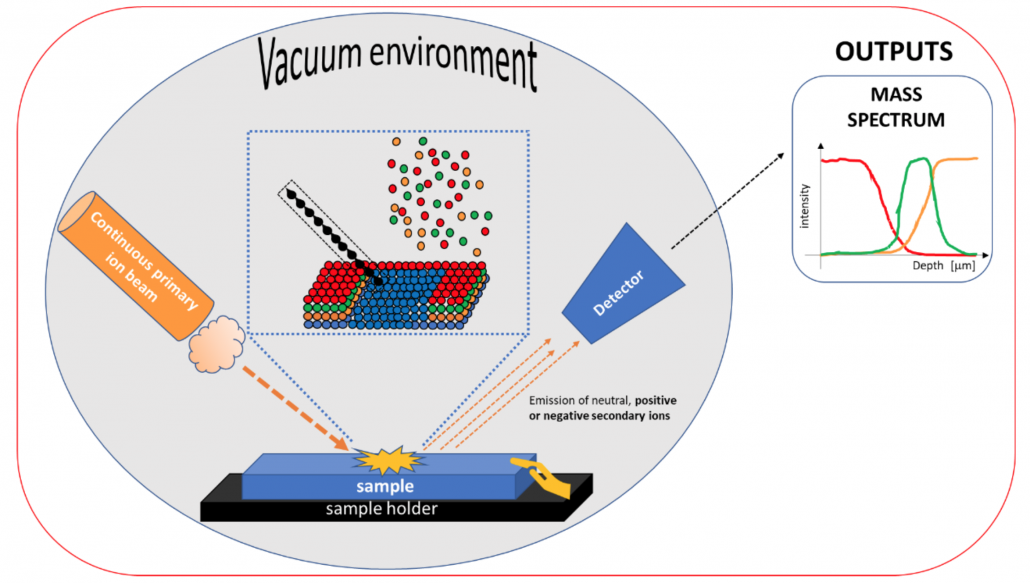How can we study the chemistry of a surface? PART 3
Secondary Ion Mass Spectrometry – SIMS
The SIMS analysis is always based on the sputtering process, but a continuous train of primary ions is directed on the sample and the sputtering is therefore more destructive.
Ion bombardment causes erosion of the sample surface and the emission of secondary ions that are detected by a detector (quadrupole or magnetic sector).
The depth profiles cover a wide depth range from a few angstroms (Å) to tens of micrometers (µm).
This technique is generally used to analyze dopants and impurities using depth profiling with ppm or lower detection sensitivity. All elements and isotopes, including H, are detected in a relatively small detection area (≥ 5 μm).
Samples that easily generate ions, like conductive samples, are preferred, but also insulating materials both in the form of a powder, fiber, or flat samples can be measured, provided they can be introduced to a vacuum environment. When measuring insulating materials, primary ion and pulsed low-energy electrons are irradiated simultaneously to prevent charge build up on the sample due to primary ion irradiation.
The analysis is destructive, with no chemical bonding information.




